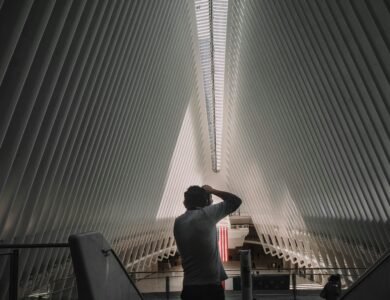Unleashing Nostalgia: Exploring the Magic of Retroya

In a world swiftly trotting towards the future, there is a sweet spot—a realm we all sometimes visit—an oasis brimming with memories of the past. This domain, coined as “Retroya,” embraces all things vintage, from the fashion trends of last century to the old-school melodies that once ruled the airwaves. For some, Retroya is a nod to an era they’ve never known, while for others, it is a heartwarming return to a time when life seemed simpler.
This blog post will unravel the allure of Retroya, not just as a current trend but as a psychological sanctuary that offers comfort, a sense of identity, and a unique appeal that transcends generations. We’ll explore why humans are naturally drawn to the past and how businesses can tap into this collective longing. If you’re a marketer, a content creator, or simply someone who finds solace in bygone days, this is a deep dive into the magic of Retroya.
The Psychology of Nostalgia
At its core, Retroya is fueled by nostalgia—a bittersweet longing for the past. This sentiment, though often considered a wistful reminiscence, has a profound psychological undertone. Research in psychology suggests that nostalgia serves as a psychological defense mechanism, protecting against existential anxieties and feelings of meaninglessness.
But why do we cherish the past so much? The answer is in the emotions that nostalgia stirs. It’s not about reliving the past, but about reliving the emotions of the past. When we encounter something that resonates with bygone times, it triggers a warm, fuzzy feeling, akin to a cozy blanket on a rainy day.
The Allure of Yesteryear
Nostalgia provides a continuum to a person’s past and makes their life more meaningful. It helps individuals maintain a continuous and positive self-image by tying their past selves to their present and future identity. In this sense, Retroya is an incarnation of the past that allows individuals to re-anchor in their own history and find a sense of belonging and security.
The Current Craze for Retroya
In the last decade, the market has seen a significant rise in the popularity of all things retro. From the resurrection of vinyl records to the vintage-themed cafes popping up in urban corners, the allure of the past is undeniably on trend. Part of this zeitgeist is fueled by millennials and Gen Z seeking authenticity in a world filled with digital imitations.
Why Millennials and Gen Z Love Retro
These generational cohorts have experienced rapid technological advancement and are digital natives. The irony is that this exposure has led them back to an appreciation for analog technologies and, in turn, to the allure of retro. Vinyl records, film photography, and classic cars are not just novelties but cultural markers that signify a connection to a more authentic past.
Retro as a Countermovement
Retroya stands as a countermovement against the hegemony of disposable culture. The desire for tangible experiences, quality craftsmanship, and the absence of planned obsolescence is strong. This trend has led to the rise of slow fashion, artisanal crafts, and a general trend towards sustainable practices.
Capitalizing on Retroya: A Marketer’s Dream
For businesses and content creators, understanding Retroya can be the key to unlocking untapped markets and engaging audiences. The key lies in appealing to the emotional connection that retro items and themes evoke in people.
Content that Echoes the Past
Creating content that resonates with the past can be as simple as using nostalgic imagery or as complex as telling stories that anchor in the past. For example, a brand that features old product designs or creates advertisements reminiscent of a bygone era can trigger consumer emotions tied to that period, thus drawing them in.
Product Design and Branding
Product design and branding play pivotal roles in evoking nostalgic connections. The resurgence of brands such as Fila, Champion, and even the iconic Coca-Cola bottle design shows how the aesthetics of yesteryear can capture the hearts of modern consumers.
Events and Experiences
Organizing events or creating experiences that reflect the past can be a potent strategy. Think 80s retro nights at clubs, vintage fashion shows, or classic car conventions. These events not only engage the audience but also create memorable experiences rooted in nostalgia.
Crafting an Authentic Experience
It’s crucial to note that capitalizing on Retroya should not merely be a marketing gimmick. Authenticity is the linchpin; superficial attempts at retro branding or content creation can come across as inauthentic and fail to resonate with the audience.
Authenticity by Design
In product design, choosing materials and forms that mimic the past can add an element of genuineness. For content creators, it means telling stories that are true to the spirit of the past, not just its aesthetics.
The Role of Storytelling
Telling authentic stories is perhaps the most powerful way to harness Retroya. It’s not just about showcasing the product or the event—it’s about building narratives that capture the essence of the past and allow the audience to relive it in their own way.
Sustainability and Ethical Branding
The retro trend is also an opportunity for brands to push their sustainability agendas. By promoting not just the aesthetic appeal but the ethical practices of eras past, brands can align themselves with consumer values and offer a deeper connection to the past.
Conclusion: A Nostalgic Future
Retroya is more than a passing trend; it’s a cultural movement deeply entrenched in the human psyche. Its popularity is a testament to the enduring power of nostalgia and the human desire for meaning and connection. Businesses that can tap into the magic of Retroya will not only attract consumers but will also create long-lasting relationships with them based on shared values and emotions.
In a fast-paced world, Retroya offers an anchor, a tether to moments and emotions we hold dear. Businesses that understand and respect this collective longing will thrive, not just by riding the wave of nostalgia but by becoming a part of the narrative of our nostalgic future.



